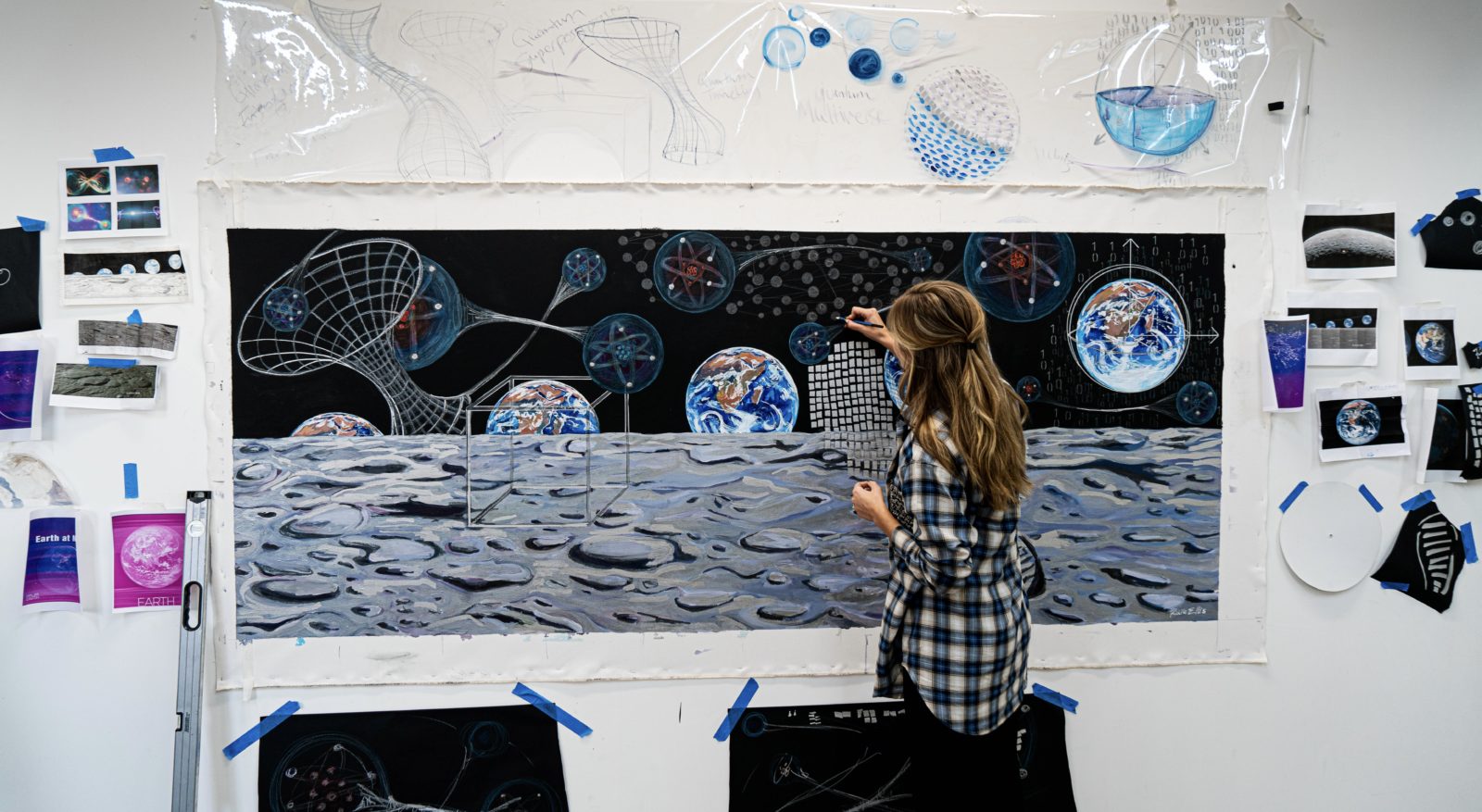Biography
Richelle Ellis is an expeditionary artist exploring planetary connectivity both on and off Earth. Her work explores connectivity in a world where human impact, technology, and the environment collide. She has had solo shows in Los Angeles, New York, Japan, and international orbit around Earth etched on satellites and aboard rockets. Recent artworks scheduled to launch to the Moon in 2023. Works exhibited worldwide including the Museum of Contemporary Art Tokyo, Museum of Design Atlanta, and the National Air and Space Museum of the Smithsonian Institution.
Ellis has completed 18 art residencies as part of her research and astronaut training, where she travels the world to reflect social and environmental changes across the globe. This multi-year artistic voyage leads her to make art in unassuming yet far-reaching places: atop glaciers near the North Pole, in a traditional Japanese paper mill in rural Japan, contained in the Biosphere 2 in Arizona, and inside a Habitat on an Analog Mars Mission with NASA Goddard. Awarded residencies include The Arctic Circle Residency, Vermont Studio Center, Awagami Factory, Kala Fellowship, and many more.
She is an Analog Astronaut and Head of Creative Research for analog space missions on the Moon and Mars via Hawai’i Space Exploration Analog and Simulation (HI-SEAS), Sensoria Program, and Lunares Research Station. She is the Founding Director of SUPERCOLLIDER, an art + sci + tech organization offering physical and virtual curations globally. Ellis is the Co-Founder and Director of Space Programs for Beyond Earth, an all-female artist collective exploring intersections between art, biology, and space.
Artist Statement
I explore life at all levels of living systems – organisms, social systems, and ecosystems – to examine and promote our interdependence. Under closer scrutiny, neural-like nodes of connectivity reveal themselves as even smaller networks. By visually revealing structural patterns and characteristics within cross-disciplinary and embedded networks, the blending of distinct social, biological, and technological systems form one integrated whole – the Earth. My work has evolved from comparing networks (molecular systems, social networks, neural pathways, freeways systems) to deep analyses of their interactions. How does connectivity, for better or for worse, influence our lives and our future?
Selected Press
-
designboomjellyfish-like balloon installation is the first large-scale artwork to fly into spaceOctober 2021
-
Magnatic MindsAn Interview with Art AstronautMarch 2021
-
USC NewsFrom artist to astronaut: a USC alum is on a mission to MarsJuly 2021
-
LA WeeklyMeet the Women Taking Art From the Gallery to Cyberspace to the MoonJune 2020
-
The AtlanticAn Artist-in-Residence Creates a Sense of PlaceDecember 2019
